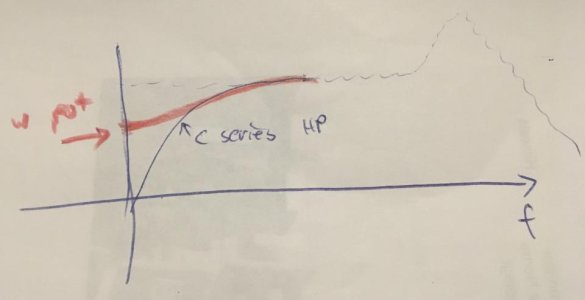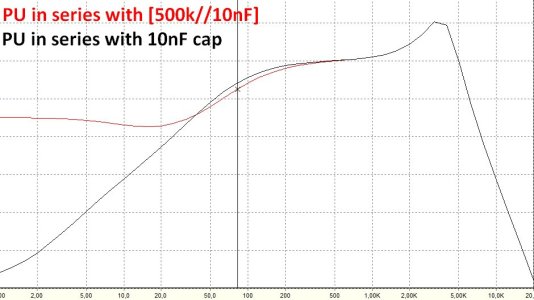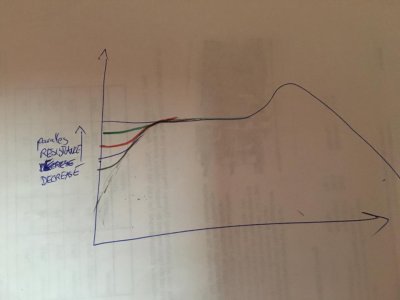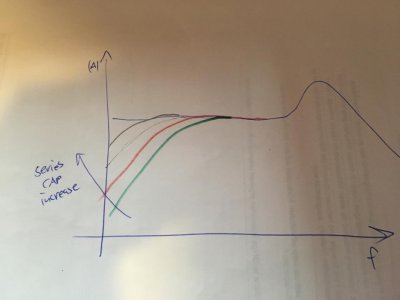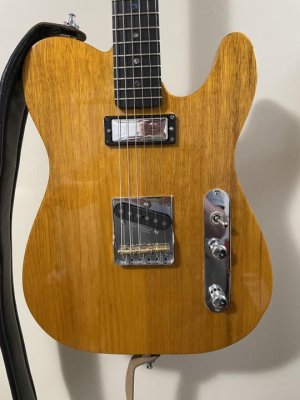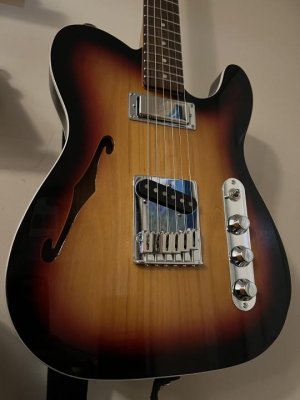freefrog
Well-known member
I always set height by ears so I'd not feel meaningful to give any advice about this.
"Still a bit dark": my SM1 bridge measures 2.56H (inductance lower than with a SSL1 Strat pickup) but has its resonant peak at the same location than a neck mini-hum measuring 3.6H.
The only explanation coming to my mind is a relatively high stray capacitance of the pickup itself, potentially due to wax potting.
Dewaxing it would be a "pain in the bottom part of the body" and wouldn't make sense with such a construction.
A no-load tone pot would make the resonant peak more peaky but without shifting it up in the audio range.
A paradoxical solution would be to darken a bit the bridge pickup thx to a small capacitor from its hot to ground. The sound should stay "natural" until a capacitance of more than 1nF so any value between 100pF and 1nF / 1000pF can be tried until the proper tonal balance is found.
Then a lower capacitance cable can be used from guitar to first input if ever brightness is necessary for both pickups. Sommer Spirit LLX has still the lowest capacitance on the market AFAIK and is still not expensive here in Europe (although 10' of LLX make a guitar sound as bright as if it was played through 3' of regular guitar cable only).
FWIW. HTH.
"Still a bit dark": my SM1 bridge measures 2.56H (inductance lower than with a SSL1 Strat pickup) but has its resonant peak at the same location than a neck mini-hum measuring 3.6H.
The only explanation coming to my mind is a relatively high stray capacitance of the pickup itself, potentially due to wax potting.
Dewaxing it would be a "pain in the bottom part of the body" and wouldn't make sense with such a construction.
A no-load tone pot would make the resonant peak more peaky but without shifting it up in the audio range.
A paradoxical solution would be to darken a bit the bridge pickup thx to a small capacitor from its hot to ground. The sound should stay "natural" until a capacitance of more than 1nF so any value between 100pF and 1nF / 1000pF can be tried until the proper tonal balance is found.
Then a lower capacitance cable can be used from guitar to first input if ever brightness is necessary for both pickups. Sommer Spirit LLX has still the lowest capacitance on the market AFAIK and is still not expensive here in Europe (although 10' of LLX make a guitar sound as bright as if it was played through 3' of regular guitar cable only).
FWIW. HTH.

